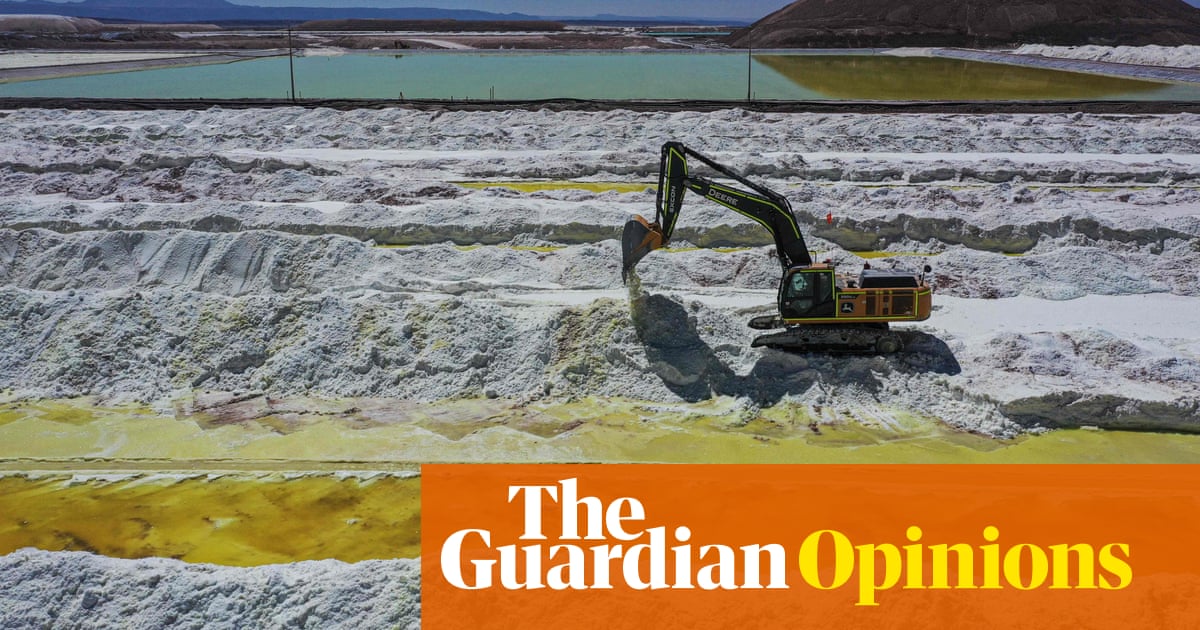Despite its name, the infrastructure used by the “cloud” accounts for more global greenhouse emissions than commercial flights. In 2018, for instance, the 5bn YouTube hits for the viral song Despacito used the same amount of energy it would take to heat 40,000 US homes annually.
Large language models such as ChatGPT are some of the most energy-guzzling technologies of all. Research suggests, for instance, that about 700,000 litres of water could have been used to cool the machines that trained ChatGPT-3 at Microsoft’s data facilities.
Additionally, as these companies aim to reduce their reliance on fossil fuels, they may opt to base their datacentres in regions with cheaper electricity, such as the southern US, potentially exacerbating water consumption issues in drier parts of the world.
Furthermore, while minerals such as lithium and cobalt are most commonly associated with batteries in the motor sector, they are also crucial for the batteries used in datacentres. The extraction process often involves significant water usage and can lead to pollution, undermining water security. The extraction of these minerals are also often linked to human rights violations and poor labour standards. Trying to achieve one climate goal of limiting our dependence on fossil fuels can compromise another goal, of ensuring everyone has a safe and accessible water supply.
Moreover, when significant energy resources are allocated to tech-related endeavours, it can lead to energy shortages for essential needs such as residential power supply. Recent data from the UK shows that the country’s outdated electricity network is holding back affordable housing projects.
In other words, policy needs to be designed not to pick sectors or technologies as “winners”, but to pick the willing by providing support that is conditional on companies moving in the right direction. Making disclosure of environmental practices and impacts a condition for government support could ensure greater transparency and accountability.



So… Absolutely need to be aware of the impact of what we do in the tech sphere, but there’s a few things in the article that give me pause:
What matter is the electrical energy converted to heat. How much was it and where did that heat go?
Can you say non sequitur ?
The outdated network holding back housing is that it doesn’t go to the right places with the capacity needed for the houses. Not that OpenAIUK is consuming so much that there’s no power left. To use a simily, there’s plenty of water but the pipes aren’t in place.
This article is well intentioned FUD, but FUD none the less.
The point they are trying to make is that fresh water is not a limitless resource and increasing usage has various impacts, for example on market prices.
The point being made is that resources are allocated to increase network capacity for hyped tech and not for current, more pressing needs.
700.000 litres also sounds like much more than 700 m³. The average German citizen consumed 129 litres per day or roughly 47 m³ annually. The water consumption of 15 people is less than most blocks.
Energy consumption might be a real problem, but I don’t see how water consumption is that big of a problem or priority here.
That seems like a lot. Where are you getting that number?
A quick search says 3.7L is the recommended intake for men, and 2.7L for women. Forget AI, Germans appear to be the real resource guzzlers!
Here “consume” means far more than just “drank”. If you take a shower at home, you are consuming water. Wash your car? Consume water. Water your garden? Consume water.
Aha! That makes a lot more sense with that framing.
EDIT: In 2019 in Canada the daily residential average was 215L per day. 129L seems like a dream in contrast.
I imagine the number goes up considerably when you account for showering, washing clothes and dishes, and water used while cooking. It would go up even more if you account for the water used to produce the food consumed by the individual.
The EPA states that each American uses an average of 82 gallons or 310.4 litres a day (study from 2015). Source: https://www.epa.gov/watersense/statistics-and-facts
I would assume that includes stuff like toilets,baths,showers,dishes and hand washing etc as fresh water uses. Either that or Germans are the ultimate hydrohommie.
Liters are a great unit for making small things seem large. I’ve seen articles breathlessly talking about how “almost 2000 liters of oil was spilled!” When 2000 liters could fit in the back of a pickup truck.
Water “consumption” is also a pretty easy to abuse term since water isn’t really consumed, it can be recycled endlessly. Whether some particular water use is problematic depends very much on the local demands on the water system, and that can be accounted for quite simply by market means - charge data centers money for their water usage and they’ll naturally move to where there’s plenty of cheap water.
That just means you have no intuitive sense of how large a litre is. If they’d written it as “2000 quarts” (which is close enough to being the same volume at that level of rounding) would it have painted a clearer picture in your head?
Oil is different because 1 ppm can ruin a whole litre or something in that direction.
It’s usually not the water itself but the energy used to “systemize” water from out-of-system sources
Pumping, pressurization, filtering, purifying all take additional energy.